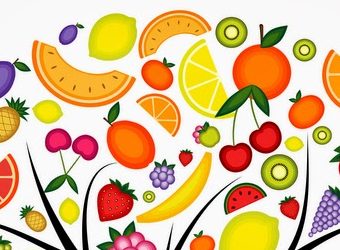Nutritional labelling
In the UK, it is a legal requirement for pre-packaged foods to have a nutritional label stating energy and macronutrients (carbohydrates, sugars, fats, saturated fats, protein) and salt per 100g or 100 ml of producti. Other nutrients may also be stated optionally. Often these labels will compare the nutritional values with the reference daily intakes (RI) i.e., the average nutrient requirement for an adult. This information helps consumers make more informed choices when buying products. Some products may also have a front-of-pack label (optional) stating the energy, fat, saturated fats, sugars and salt with %RI and a colour-coded traffic light system. Red (high), amber (medium) and green (low) colour scheme is used as the guideline for this labelling systemi.

Allergens
Allergen labelling is a crucial aspect of food labelling, particularly in recent years with reports of adverse incidents from allergic reactions. It is mandatory for manufacturers to provide a full ingredient list of their products highlighting allergens to ensure that consumers are well-informed. You will often find certain ingredients highlighted in bold or italicized on the ingredients list. This is because they belong to a list of 14 common allergensii.

Claims
Nutrition claims are made by manufacturers to inform consumers about desirable nutritional characteristics such as ‘high in fibre’, ‘low fat’ or ‘source of [nutrient]’. These claims may only be made if the said product meets a defined criterion, e.g 100g of product must contain at least 6g of dietary fibre to be considered ‘high in fibre’. Similarly, food labels may also contain health claims which convey additional health benefits associated with ingredients or nutrients in the products. These claims are only approved if there is enough scientific evidence to confirm the health benefits in the general population. Nowadays, it’s also common to find ‘free-from’ claims such as ‘gluten-free’ or ‘lactose-free’. Currently, the only approved free-from claim is the ‘gluten-free’ claim (<20 mg/kg of gluten) iii. Products with this claim considered suitable for coeliacs and those intolerant to gluten.
Use By vs Best Before – What’s the difference?
You may have seen ‘use by’ dates and ‘best before’ dates on products in the supermarket. But what do these dates actually mean? Use by dates indicate food safety – foods past this date are considered unsafe to consume and must be consumed on or before the dateiv. However, best before dates relate to quality aspects of the product (taste, texture, appearance etc.). Foods may be safe to consume past their best date but may not necessarily meet quality standards.iv Sniff tests, visible mould or staling can be a good indicator when deciding whether it is appropriate to consume products past their best before dates.
Food labels provide a lot of information – from nutritional value and allergens to food safety and quality of the product. So next time you buy a food product, take a closer look at the labels and see what you can spot!

Further information
For more information and the latest updates on food labelling visit
https://www.nutrition.org.uk/putting-it-into-practice/food-labelling/looking-at-labels/
References
i. Department of Health and Social Care (2021) Nutrition legislation information sheet. Available from: https://www.gov.uk/government/publications/nutrition-legislation-information-sources/nutrition-legislation-information-sheet–2#:~:text=From%2013%20December%202016%2C%20it,those%20with%20little%20nutritional%20value.
ii. Food Standards Agency (2021) Food allergy and intolerance. Available from: https://www.food.gov.uk/safety-hygiene/food-allergy-and-intolerance
iii. Food and Drink Federation (2015). Guidance on “Free-From” Allergen Claims. Available from: https://www.fdf.org.uk/globalassets/resources/publications/brc-free-from-guidance.pdf
iv. EUFIC (2010) The Importance of Food Labelling. Available from: https://www.eufic.org/en/healthy-living/article/food-labelling-a-wealth-of-information-for-consumers

